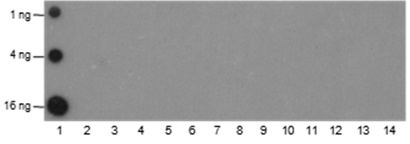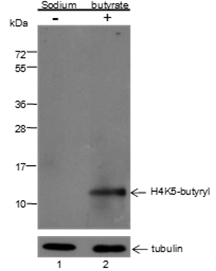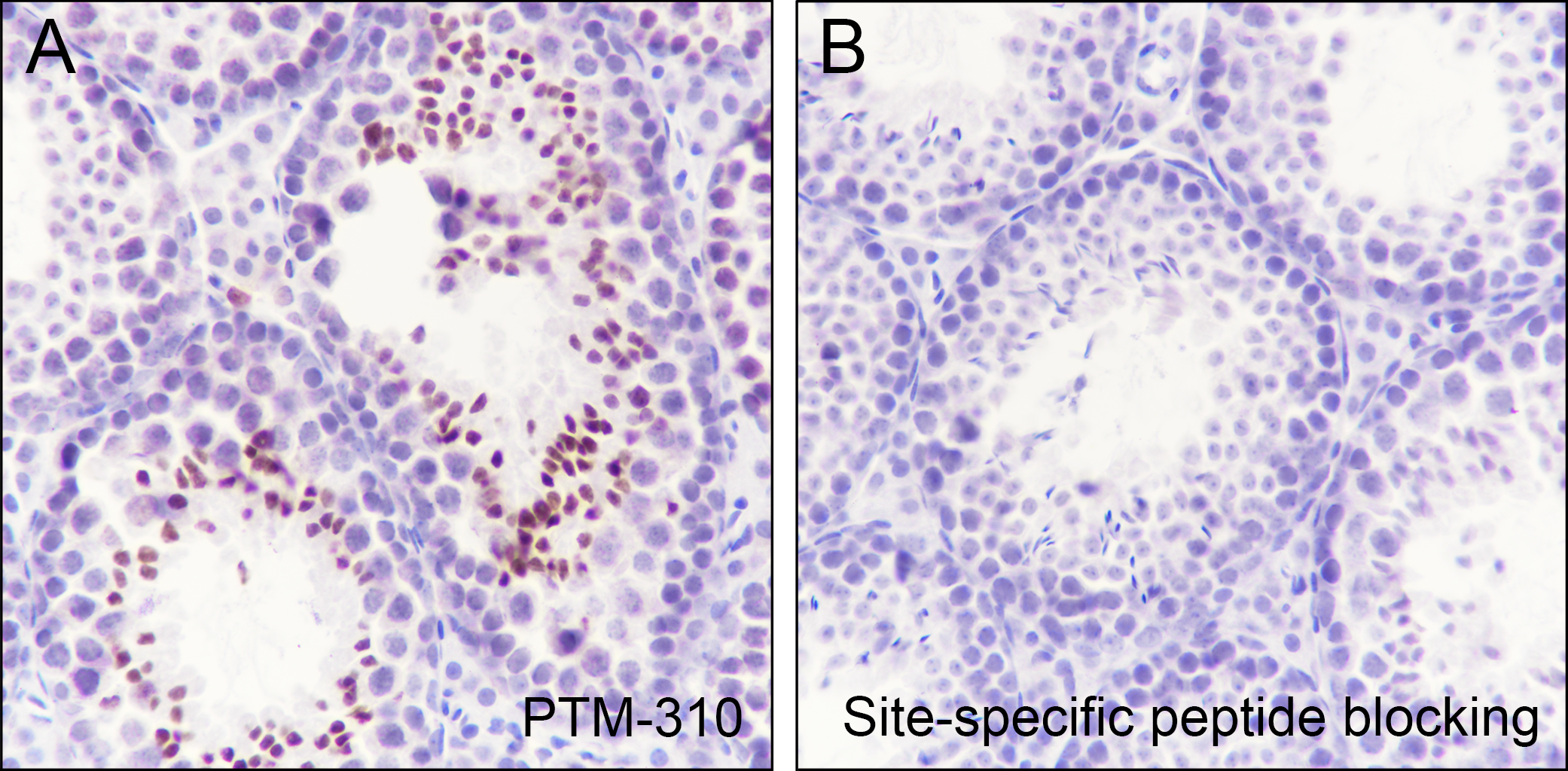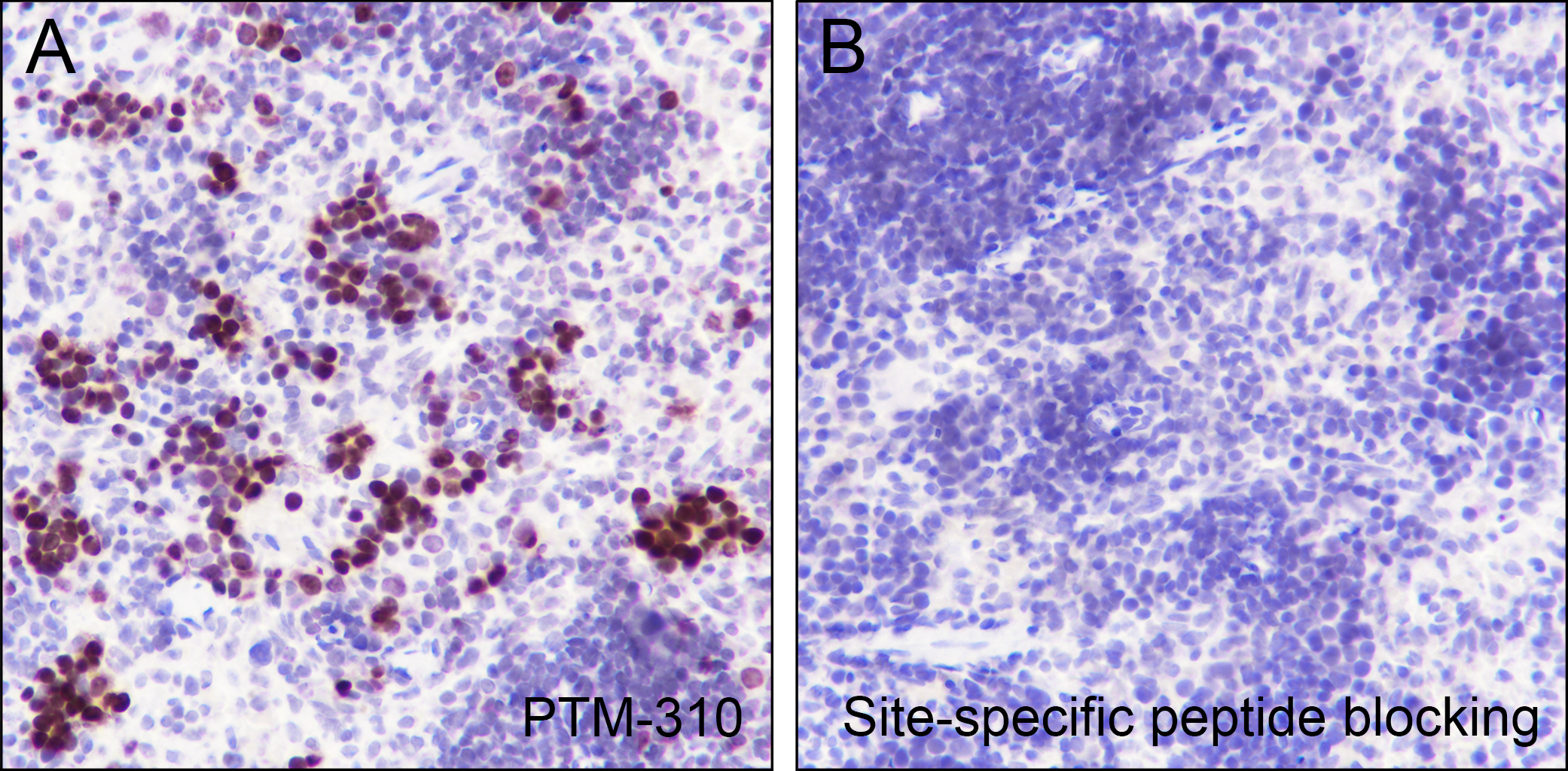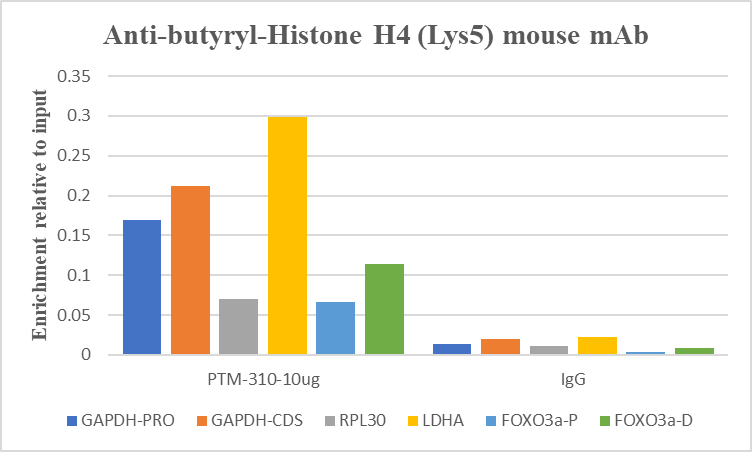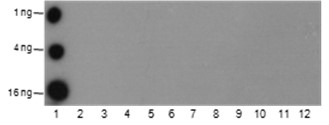Background
Histones are subject to a variety of enzyme catalyzed modifications, including acetylation, methylation, phosphorylation, ubiquitylation, etc. Butyrylation of lysine, structurally similar to lysine acetylation, is a newly identified reversible modification controlling protein activity. The reversible lysine butyrylation has been well demonstrated in both prokaryotes and eukaryotes in wide ranges of proteins including histones and non-histone substrates, such as p53. Similar to acetylation of histione H4 at lysine 12, butyrylation of histone H4 at lysine 5 may play a vital role in the epigenetic modulation, including chromatin remodeling and DNA transcriptional regulation.
Cellular location
Nucleus


